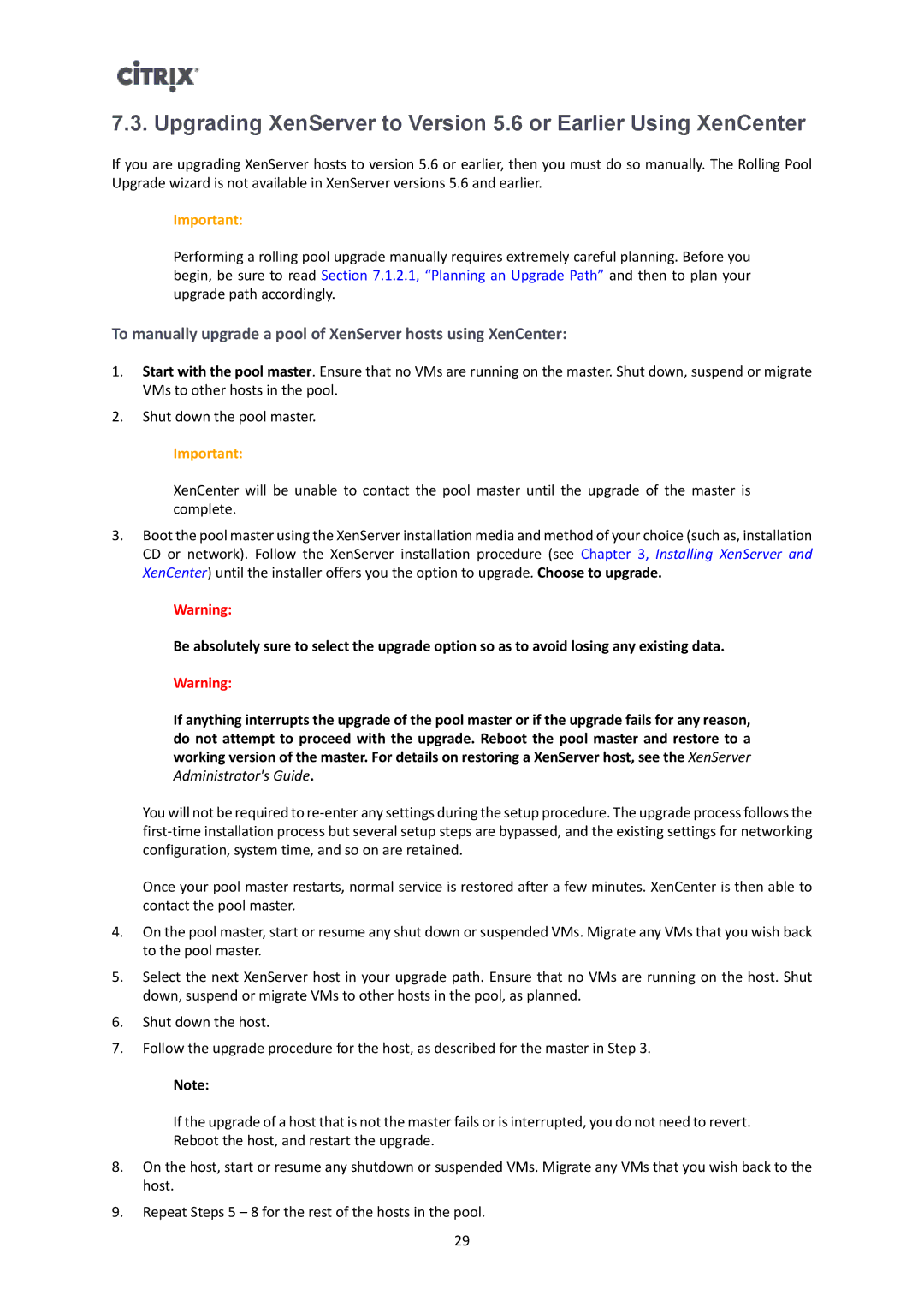7.3. Upgrading XenServer to Version 5.6 or Earlier Using XenCenter
If you are upgrading XenServer hosts to version 5.6 or earlier, then you must do so manually. The Rolling Pool Upgrade wizard is not available in XenServer versions 5.6 and earlier.
Important:
Performing a rolling pool upgrade manually requires extremely careful planning. Before you begin, be sure to read Section 7.1.2.1, “Planning an Upgrade Path” and then to plan your upgrade path accordingly.
To manually upgrade a pool of XenServer hosts using XenCenter:
1.Start with the pool master. Ensure that no VMs are running on the master. Shut down, suspend or migrate VMs to other hosts in the pool.
2.Shut down the pool master.
Important:
XenCenter will be unable to contact the pool master until the upgrade of the master is complete.
3.Boot the pool master using the XenServer installation media and method of your choice (such as, installation CD or network). Follow the XenServer installation procedure (see Chapter 3, Installing XenServer and XenCenter) until the installer offers you the option to upgrade. Choose to upgrade.
Warning:
Be absolutely sure to select the upgrade option so as to avoid losing any existing data.
Warning:
If anything interrupts the upgrade of the pool master or if the upgrade fails for any reason, do not attempt to proceed with the upgrade. Reboot the pool master and restore to a working version of the master. For details on restoring a XenServer host, see the XenServer Administrator's Guide.
You will not be required to
Once your pool master restarts, normal service is restored after a few minutes. XenCenter is then able to contact the pool master.
4.On the pool master, start or resume any shut down or suspended VMs. Migrate any VMs that you wish back to the pool master.
5.Select the next XenServer host in your upgrade path. Ensure that no VMs are running on the host. Shut down, suspend or migrate VMs to other hosts in the pool, as planned.
6.Shut down the host.
7.Follow the upgrade procedure for the host, as described for the master in Step 3.
Note:
If the upgrade of a host that is not the master fails or is interrupted, you do not need to revert. Reboot the host, and restart the upgrade.
8.On the host, start or resume any shutdown or suspended VMs. Migrate any VMs that you wish back to the host.
9.Repeat Steps 5 – 8 for the rest of the hosts in the pool.
29
